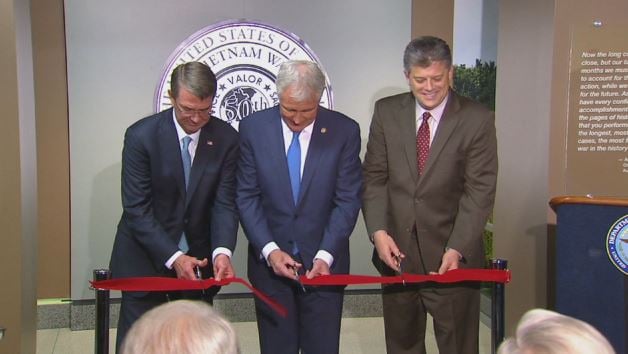Carlosa
SENIOR MEMBER

- Joined
- Jun 10, 2014
- Messages
- 3,875
- Reaction score
- 3
- Country
- Location
Vietnam Acquires Two Early Warning Aircraft with ELTA Radar
Vietnam will buy at least two early-warning C-295 AEW&C aircraft to enhance the ability to control the South China Sea airspace
Ami Rojkes Dombe | 30/05/2016
http://www.israeldefense.co.il/en/content/vietnam-acquires-two-early-warning-aircraft-elta-radar

C295 AEW and C295 Transport - militaryaircraft-airbusds.com
According to a report on aseanmildef, Vietnam is purchasing two C-295 type early-warning aircraft (AEW&C). The Airborne Early Warning and Control (AEW&C) system was developed jointly by ELTA and Airbus in 2006.
In view of China's activity in the South China Sea, Vietnam is probably looking for surveillance and intelligence means that will enable it to better monitor its borders.
According to the report, Vietnam ordered at least two such aircraft.
Vietnam will Buy Early Warning Aircraft C-295 AEW&C
Maki Catama 9:51:00 PM
http://www.aseanmildef.com/2016/05/vietnam-will-buy-early-warning-aircraft.html
HANOI, -- Vietnam will buy at least two early-warning aircraft C-295 AEW&C to enhance the ability to control the South China Sea airspace.
World media simultaneously reported that Vietnam will buy at least 2 aircraft early warning and control air C-295 AEW&C to enhance the ability to control airspace East Sea and provide information reconnaissance, early warning control service of the sky, ready to fight.
This is not without basis when multiple signals recently that Vietnam will likely favor buying the aircraft.
C-295 AEW&C necessary for Vietnam
Military experts said that the C-295 AEW&C is now very necessary for Vietnam.
Accordingly, Vietnam Army was initially formed diverse combat capability with modern weapons such as the Su-30MK2 aircraft, high-speed vessels Molniya rocket, rocket ship Gepard 3.9 Guardians, submarine Kilo 636, missile shore Bastion-P.
However, we still lack a means of linking the modern weapon systems as well as an extended arm to operate, it's early warning aircraft.
The early warning aircraft act in coordination with aircraft, warships help remote target detection, homing missiles, expanding the range of weapons combat. Besides early warning aircraft are also intermediate link, as well as help coordinate the activities of different weapons.
Also according to analysts, this aircraft uses the chassis of the transport aircraft C-295 should help to reduce maintenance costs as well as trained pilots, mechanics.
ELTA radar could be linked to the arms of the Russian system, which Vietnam is owned by Israel have a lot of experience in improving weapons as well as providing radar early warning aircraft to India (the country use Russian aircraft system), C-295 AEW&C is considered the optimal solution for the needs of Vietnam.
Many positive signs
In particular, local and international media also published photographs delegations visiting Vietnam Military C-295 aircraft AEW&C.
This is considered a good signal to accelerate the process of negotiation and transfer between Vietnam and the defense industrial company Israel Aerospace Industries (IAI), Israel.
In a statement to the media in February month 6/2014, Mr. Antonio Rodríguez Barberan, Director of Airbus DS (subsidiary of Airbus Group European aviation) officially revealed, Ecuador and Vietnam is two of the many new customers have ordered 3 transport aircraft C-295 Airbus DS for each country.
Meanwhile, Russia's Independent newspaper, said that the modernization requires the Air Force in the near future, Vietnam will buy at least two aircraft airborne early warning, in which CASA C-295 is one of the leading candidate.
Because this will be the aircraft is equipped with the electronic system can be compatible with 6 seaplane DHC-6 Twin Otter Navy Air Force Vietnam and create a network of surveillance and early warning area for both air and sea, thereby enhancing the combat readiness capability for our Army.
Vietnam will buy at least two early-warning C-295 AEW&C aircraft to enhance the ability to control the South China Sea airspace
Ami Rojkes Dombe | 30/05/2016

http://www.israeldefense.co.il/en/content/vietnam-acquires-two-early-warning-aircraft-elta-radar

C295 AEW and C295 Transport - militaryaircraft-airbusds.com
According to a report on aseanmildef, Vietnam is purchasing two C-295 type early-warning aircraft (AEW&C). The Airborne Early Warning and Control (AEW&C) system was developed jointly by ELTA and Airbus in 2006.
In view of China's activity in the South China Sea, Vietnam is probably looking for surveillance and intelligence means that will enable it to better monitor its borders.
According to the report, Vietnam ordered at least two such aircraft.
Vietnam will Buy Early Warning Aircraft C-295 AEW&C
Maki Catama 9:51:00 PM
http://www.aseanmildef.com/2016/05/vietnam-will-buy-early-warning-aircraft.html
HANOI, -- Vietnam will buy at least two early-warning aircraft C-295 AEW&C to enhance the ability to control the South China Sea airspace.
World media simultaneously reported that Vietnam will buy at least 2 aircraft early warning and control air C-295 AEW&C to enhance the ability to control airspace East Sea and provide information reconnaissance, early warning control service of the sky, ready to fight.
This is not without basis when multiple signals recently that Vietnam will likely favor buying the aircraft.
C-295 AEW&C necessary for Vietnam
Military experts said that the C-295 AEW&C is now very necessary for Vietnam.
Accordingly, Vietnam Army was initially formed diverse combat capability with modern weapons such as the Su-30MK2 aircraft, high-speed vessels Molniya rocket, rocket ship Gepard 3.9 Guardians, submarine Kilo 636, missile shore Bastion-P.
However, we still lack a means of linking the modern weapon systems as well as an extended arm to operate, it's early warning aircraft.
The early warning aircraft act in coordination with aircraft, warships help remote target detection, homing missiles, expanding the range of weapons combat. Besides early warning aircraft are also intermediate link, as well as help coordinate the activities of different weapons.
Also according to analysts, this aircraft uses the chassis of the transport aircraft C-295 should help to reduce maintenance costs as well as trained pilots, mechanics.
ELTA radar could be linked to the arms of the Russian system, which Vietnam is owned by Israel have a lot of experience in improving weapons as well as providing radar early warning aircraft to India (the country use Russian aircraft system), C-295 AEW&C is considered the optimal solution for the needs of Vietnam.
Many positive signs
In particular, local and international media also published photographs delegations visiting Vietnam Military C-295 aircraft AEW&C.
This is considered a good signal to accelerate the process of negotiation and transfer between Vietnam and the defense industrial company Israel Aerospace Industries (IAI), Israel.
In a statement to the media in February month 6/2014, Mr. Antonio Rodríguez Barberan, Director of Airbus DS (subsidiary of Airbus Group European aviation) officially revealed, Ecuador and Vietnam is two of the many new customers have ordered 3 transport aircraft C-295 Airbus DS for each country.
Meanwhile, Russia's Independent newspaper, said that the modernization requires the Air Force in the near future, Vietnam will buy at least two aircraft airborne early warning, in which CASA C-295 is one of the leading candidate.
Because this will be the aircraft is equipped with the electronic system can be compatible with 6 seaplane DHC-6 Twin Otter Navy Air Force Vietnam and create a network of surveillance and early warning area for both air and sea, thereby enhancing the combat readiness capability for our Army.
Last edited:

























